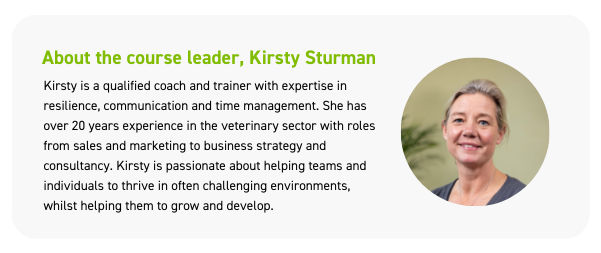
Is talking to clients about money your pet hate?
Does talking about fees, with your clients make you feel uncomfortable? Do you worry that clients think you are 'all about the money' when you start talking about treatment costs? We all want the best possible outcomes for our patients and want to work with our clients to achieve these. But all too often, money becomes the 'pain point' in practice. In this short blog we're going to consider some options and skills that can be used in practice. These skills can be transferred through to any consultation or client interaction. Just varying the extent and intensity in which you use them according to the type of client in front of you. The first skill is to chunk and check The ‘Chunk and Check’ technique involves breaking down the information that you want to discuss, and that you need your client to understand, into smaller, more manageable parts rather than providing it all at once. ‘Chunking’ means breaking down longer and more complex explanations into digestible pieces, or ‘chunks’. This can help your client’s understanding and recall because smaller pieces of information are easier to process. After you give a piece of information, ‘check’ that your client has understood what you are trying to say. Only move on to the next ‘chunk’ when you are confident about the understanding of the current ‘chunk’. Clients may have questions while things are being explained to them, which limits their understanding of the information that follows. If all the information is provided at once, and they hold their question until the end, their understanding may be affected. They may also forget to seek clarification of critical pieces of information. The ‘Chunk and Check’ method can address this by stopping at appropriate moments to check understanding and to give your client the opportunity to ask questions at key points. Provide the most important information first – it is most likely to be remembered. Ensure you confirm their understanding of the key points during the discussion; and watch your client’s face whilst giving information – look for non-verbal cues that they are feeling overloaded by information or their attention has dropped. Commit to having crucial conversations People tend to have a lot of “internal chatter ” – negative beliefs you may have about your abilities, your skills as a clinician or yourself. It affects what you do and how you do it. The problem with this inner critique is that these negative beliefs can become behaviours. Behaviours become feelings and feelings become results – typically not the results you're hoping for. When it comes to talking to clients about pricing, billing and other tricky topics, maybe you assume that they’ll be upset about the costs and imagine the pushback you’ll get. Or perhaps you worry that if you pressure your client to commit to an expensive yet necessary treatment, they’ll take their business elsewhere. The problem with the inner critique is that your negative beliefs become behaviours that prevent the types of results you want. Rather than letting your inner critique get in the way, commit to having those difficult conversations. Set expectations upfront about pricing, timely billing and collections, and tell clients what they need to hear rather than what you think they want to hear. Minor issues, when addressed promptly in a thoughtful and compassionate way, are easy to fix. Left ignored, they tend to expand into major problems. Set out to create a dialog When approaching a topic you know will be particularly delicate, such as treatment costs, aim to create a dialog with your client. For a dialog to take place, both parties need to feel safe enough to exchange facts, ideas and thoughts that will lead to an outcome both parties feel good about. The tricky part is recognising right away when the conversation starts to head in a negative direction. This can be tough when you’re also thinking about what to say next. Whether you have a conversation over the phone, over video or in person, look out for verbal and/or physical clues that communication is breaking down. For example, people might resort to sarcasm, change the subject or exit the conversation altogether, cut you off, dismiss you or your ideas or ‘attack the messenger’. Make it safe When the conversation goes in a negative direction, how can you pull it back to safety? Once you realise what is going on, step away from the challenging topic temporarily. You can then work on building safety by getting back to the facts and eventually returning to a dialog. If your intentions have been misunderstood, try contrasting. Contrasting is a skill that helps you clarify your intentions, so the other person feels safe. You start by saying what you are NOT talking about, i.e. a discretionary and avoidable expense, then follow that with what you ARE talking about, i.e. the wellbeing of your patient. Manage your emotions Managing emotions can be difficult during a tough conversation, so being able to take a step back and analyse the root cause of your emotions can be a very powerful skill. When you give advice that your client doesn’t want to hear, they may try to defend themselves by attacking your statement. Don’t allow yourself to become defensive – it will only escalate the tension. In veterinary practice, difficult conversations will inevitably come up from time to time, but it does get easier with practice. Simply by facing up to some difficult topics, you’ve taken a positive step toward building trust, and trust is the foundation of a positive client relationship. VDS Training’s workshop, Let's Talk About Money, works through some of the common challenges involved in financial discussions and gives you the opportunity to try out communication strategies to find out which work for you.

VDS Training Services Ltd (trading as VDS Training) is a wholly owned subsidiary of The Veterinary Defence Society Limited.
